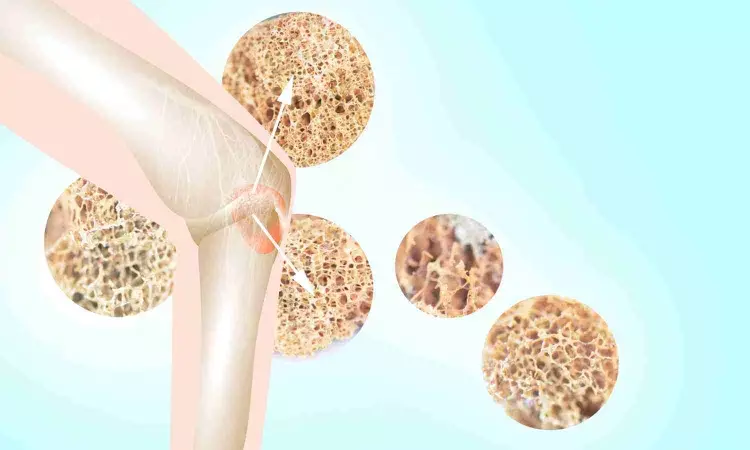- Home
- Medical news & Guidelines
- Anesthesiology
- Cardiology and CTVS
- Critical Care
- Dentistry
- Dermatology
- Diabetes and Endocrinology
- ENT
- Gastroenterology
- Medicine
- Nephrology
- Neurology
- Obstretics-Gynaecology
- Oncology
- Ophthalmology
- Orthopaedics
- Pediatrics-Neonatology
- Psychiatry
- Pulmonology
- Radiology
- Surgery
- Urology
- Laboratory Medicine
- Diet
- Nursing
- Paramedical
- Physiotherapy
- Health news
- Fact Check
- Bone Health Fact Check
- Brain Health Fact Check
- Cancer Related Fact Check
- Child Care Fact Check
- Dental and oral health fact check
- Diabetes and metabolic health fact check
- Diet and Nutrition Fact Check
- Eye and ENT Care Fact Check
- Fitness fact check
- Gut health fact check
- Heart health fact check
- Kidney health fact check
- Medical education fact check
- Men's health fact check
- Respiratory fact check
- Skin and hair care fact check
- Vaccine and Immunization fact check
- Women's health fact check
- AYUSH
- State News
- Andaman and Nicobar Islands
- Andhra Pradesh
- Arunachal Pradesh
- Assam
- Bihar
- Chandigarh
- Chattisgarh
- Dadra and Nagar Haveli
- Daman and Diu
- Delhi
- Goa
- Gujarat
- Haryana
- Himachal Pradesh
- Jammu & Kashmir
- Jharkhand
- Karnataka
- Kerala
- Ladakh
- Lakshadweep
- Madhya Pradesh
- Maharashtra
- Manipur
- Meghalaya
- Mizoram
- Nagaland
- Odisha
- Puducherry
- Punjab
- Rajasthan
- Sikkim
- Tamil Nadu
- Telangana
- Tripura
- Uttar Pradesh
- Uttrakhand
- West Bengal
- Medical Education
- Industry
Compounds in female ginseng could lead to new osteoporosis treatments, claims study

With ever-increasing life expectancy comes the challenge of treating age-related disorders such as osteoporosis. Although there are effective drugs for treating this metabolic bone disease, they can be expensive and have side effects, limiting their availability to some people. In the search for alternative drug candidates, researchers reporting in ACS Central Science have discovered and fully replicated a compound from a botanical source, female ginseng, that had potent anti-osteoporotic activity in cellular tests.
Osteoporosis and low bone mass impact 54 million American adults over the age of 50, according to the International Osteoporosis Foundation. The disease can progress to significant disability, such as hip and spine fractures, and financial burdens, such as lost wages and hospitalization. Several drugs have proven effective in either preventing bone loss or promoting bone formation, but each comes with potential side effects, including injury to jaw and leg bones. Searching for alternative treatments, Hao Gao, Xin-Luan Wang and colleagues turned to female ginseng (Angelica sinensis), which has long been used in traditional Chinese medicine to treat osteoporosis.
The researchers performed chemical extraction on the medicinal plant and identified two new compounds, calling them falcarinphthalide A and B, that were structurally unlike anything previously discovered in female ginseng. They also determined potential biosynthetic precursors and metabolic pathways that the plants use to form these compounds. Then, with these mechanisms as starting points, the team devised lab synthesis methods and produced the compounds at quantities sufficient for biological testing. Inspired by the traditional efficacy of female ginseng, the team tested the compounds for their impact on the formation of cells called osteoclasts, which facilitate bone loss. They observed that only falcarinphthalide A and its precursors showed osteoclast inhibitory activity and an anti-osteoporotic effect. Further analysis showed that falcarinphthalide A blocked key molecular pathways involved in osteoclast generation. The researchers say that this study opens up the possibilities for new osteoporosis treatments based on the female ginseng compound, whether in its current form or as a structural template for further drug development.
Reference:
Jian Zou, Zuo-Cheng Qiu, Qiang-Qiang Yu, Jia-Ming Wu, Yong-Heng Wang, Ke-Da Shi, Yi-Fang Li, Rong-Rong He, Ling Qin, Xin-Sheng Yao, Xin-Luan Wang*, and Hao Gao, Discovery of a Potent Antiosteoporotic Drug Molecular Scaffold Derived from Angelica sinensis and Its Bioinspired Total Synthesis, https://doi.org/10.1021/acscentsci.3c01414.
Dr Kamal Kant Kohli-MBBS, DTCD- a chest specialist with more than 30 years of practice and a flair for writing clinical articles, Dr Kamal Kant Kohli joined Medical Dialogues as a Chief Editor of Medical News. Besides writing articles, as an editor, he proofreads and verifies all the medical content published on Medical Dialogues including those coming from journals, studies,medical conferences,guidelines etc. Email: drkohli@medicaldialogues.in. Contact no. 011-43720751


